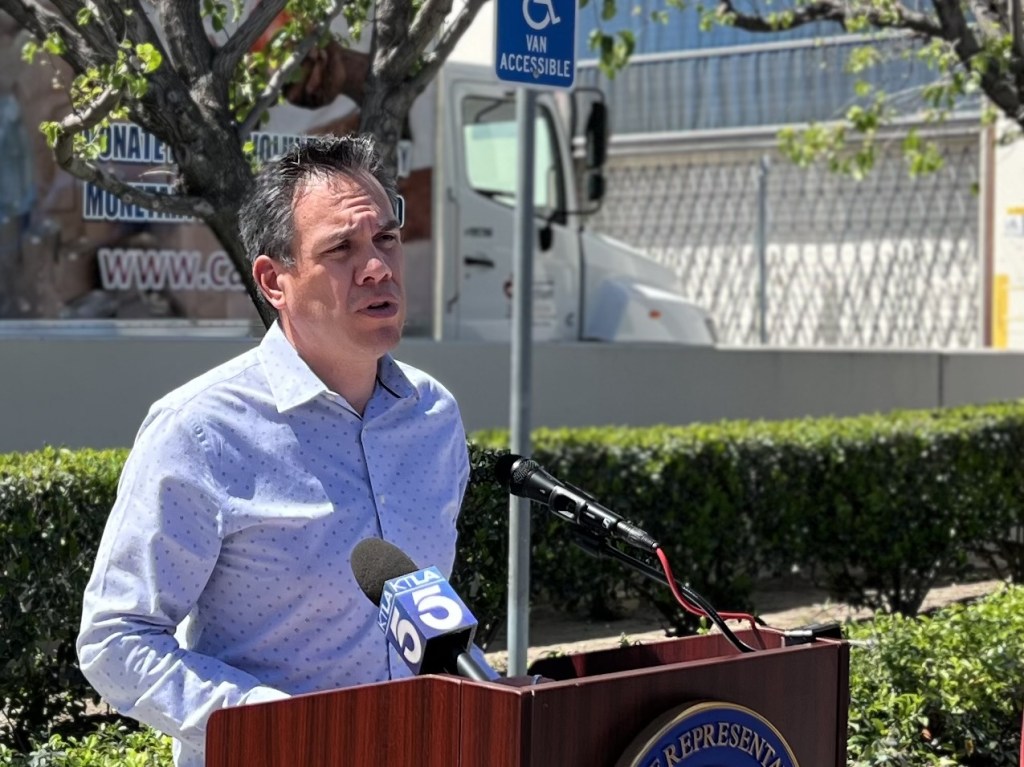
More Inland Empire residents will go hungry because of cuts to the U.S. Department of Agriculture, according to Rep. Pete Aguilar, D-San Bernardino.
“In the Inland Empire, too many of our neighbors — nearly one in four — goes hungry or struggle to afford food regularly,” Aguilar said Friday, April 11, at a news conference held at Community Action Partnership of San Bernardino County’s food bank in San Bernardino.
“That’s why I’m deeply concerned about the impacts that the Inland Empire could face with the Trump administration’s cuts,” he said, calling the decision to slash $500 million from the Emergency Food Assistance Program run by the Department of Agriculture “reckless.”
The Emergency Food Assistance Program buys food from local farmers around the country and passes it on to food pantries. The Trump administration has paused funding for the program.
“This program covers 20% of the food distribution cost to the food bank system,” Aguilar said. “And they’ve frozen another $500 million from another program that allows the Department of Agriculture to produce local goods that give local farmers more business.”
The administration also canceled the Local Food Purchase Assistance Cooperative Agreement Program, which provided another $500 million for food banks each year.
The administration did so, Aguilar said, “to pay for tax breaks for billionaires.”
In March, the USDA said the programs are a legacy of the coronavirus pandemic and no longer represent the agency’s priorities.
“The COVID era is over — USDA’s approach to nutrition programs will reflect that reality moving forward,” a USDA spokesperson said in a statement.
In the Inland Empire, Patricia L. Nickols-Butler, CEO of Community Action Partnership of San Bernardino County said, the programs offered by food banks make a huge difference.
“They are the difference between a child going to school hungry or focused and ready to learn. They are the difference between a working parent choosing whether to pay rent or to buy groceries,” she said. “These programs are not ‘excess,’ they are essential.”
The cuts to the federal program will mean 40% less food from Community Action Partnership’s food pantry program, she said. The organization’s soup kitchens will also face major cuts.
Community Action Partnership distributes 14 million pounds of food working with more than 200 agencies, serving 170,000 families, said Thomas Rice, chairperson of Community Action Partnership of San Bernardino County’s board of directors.
“We can’t do this work without the support of state and federal elected leaders helping us out and making sure the money’s there to do this programming,” Rice said.



